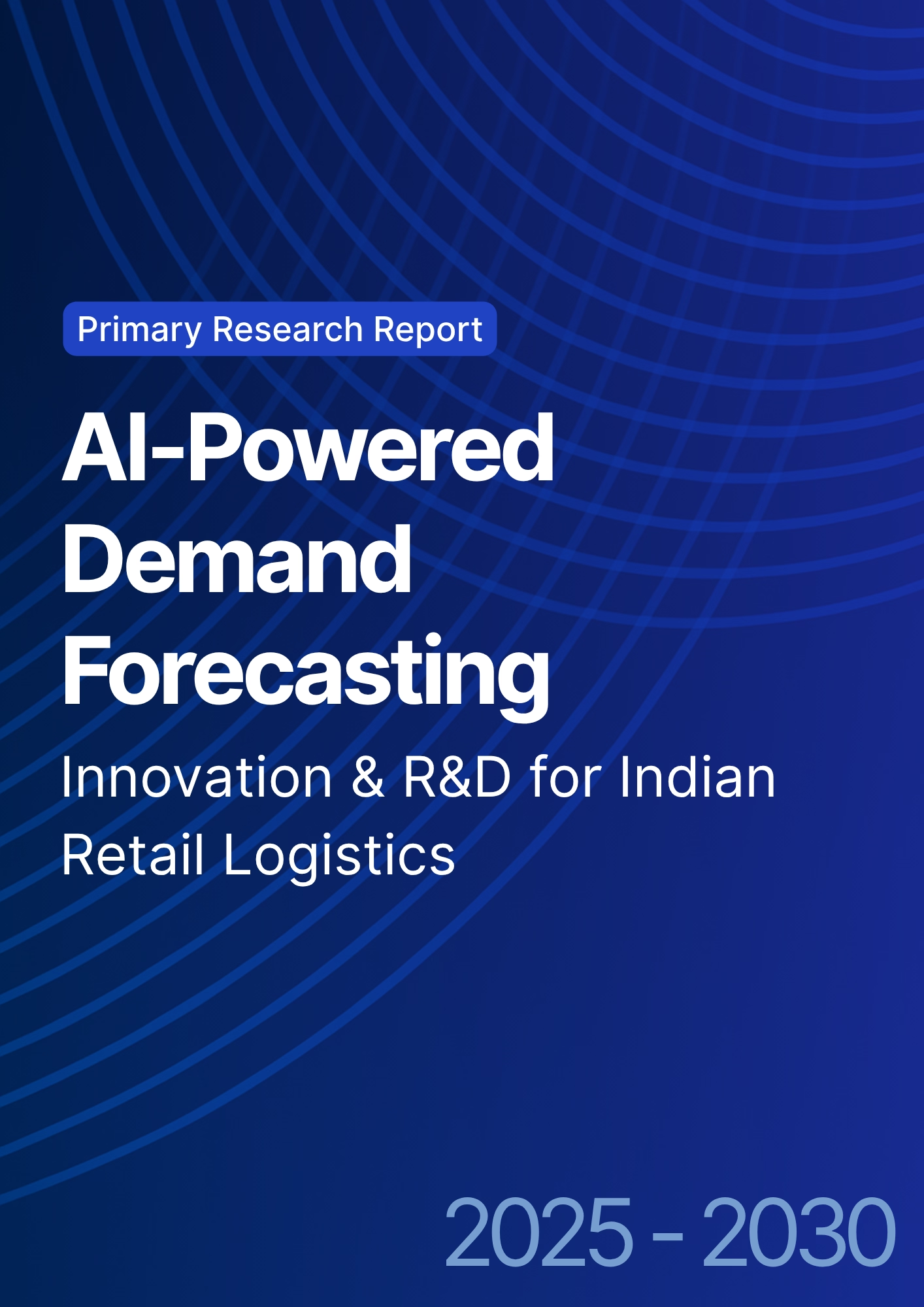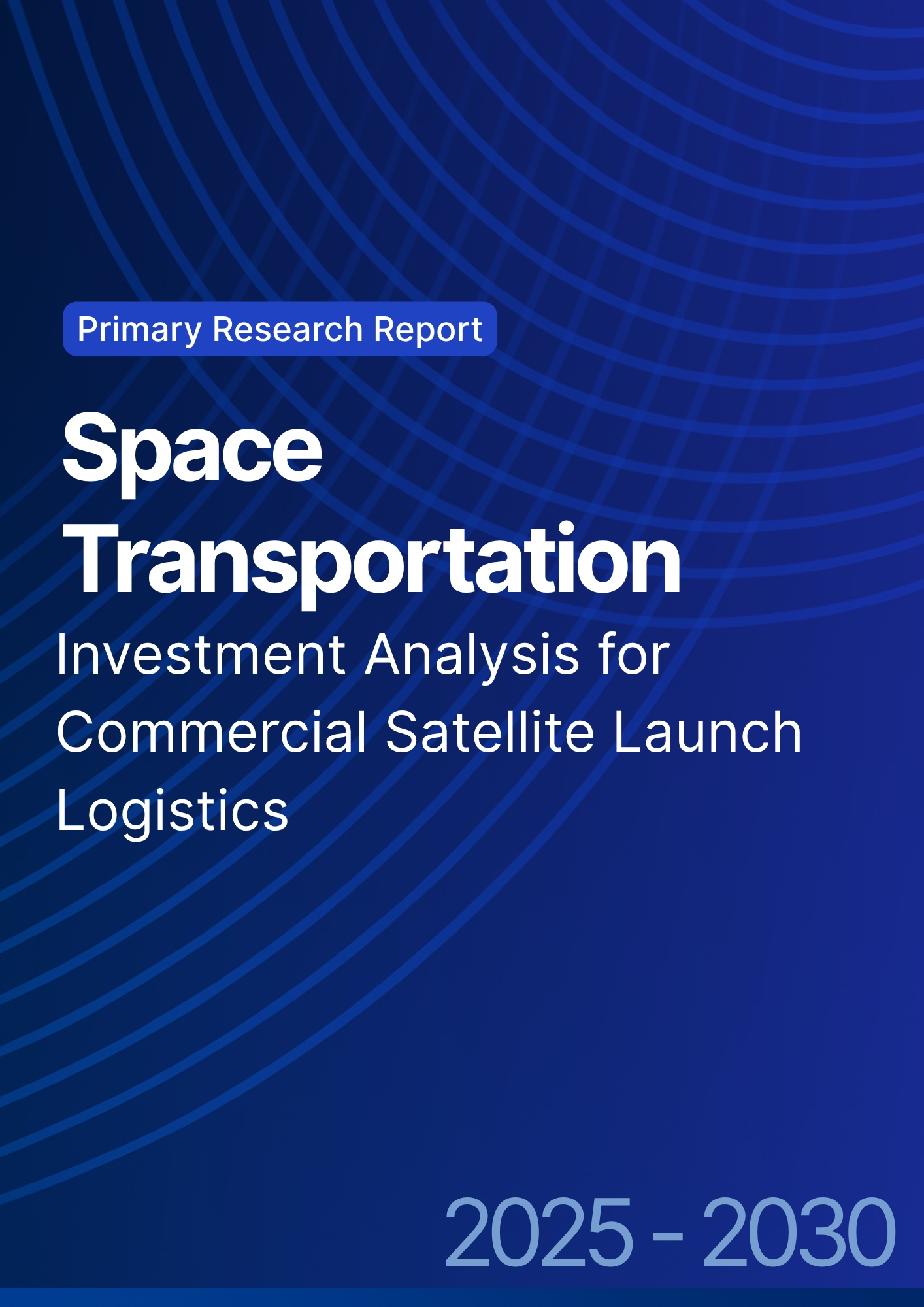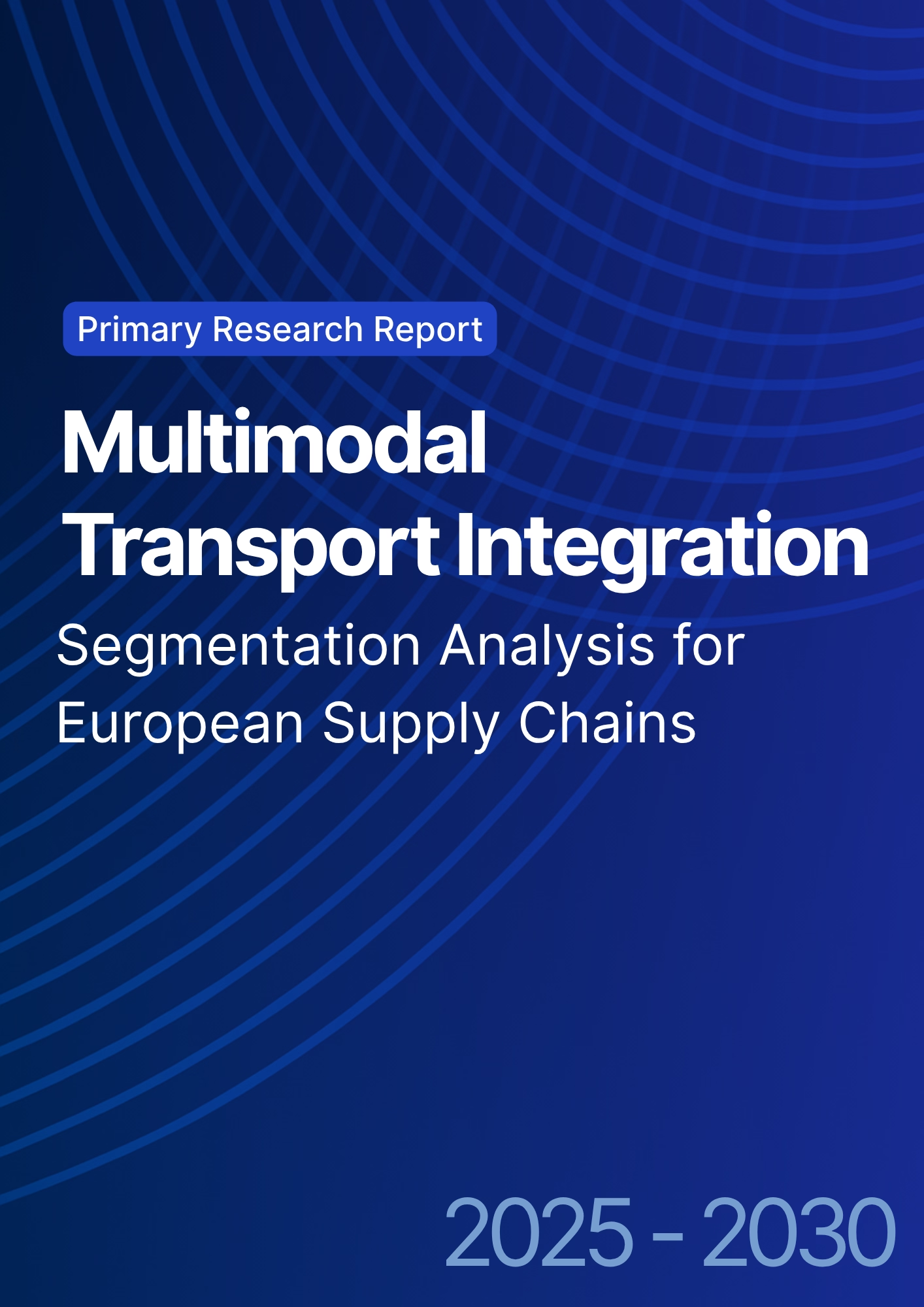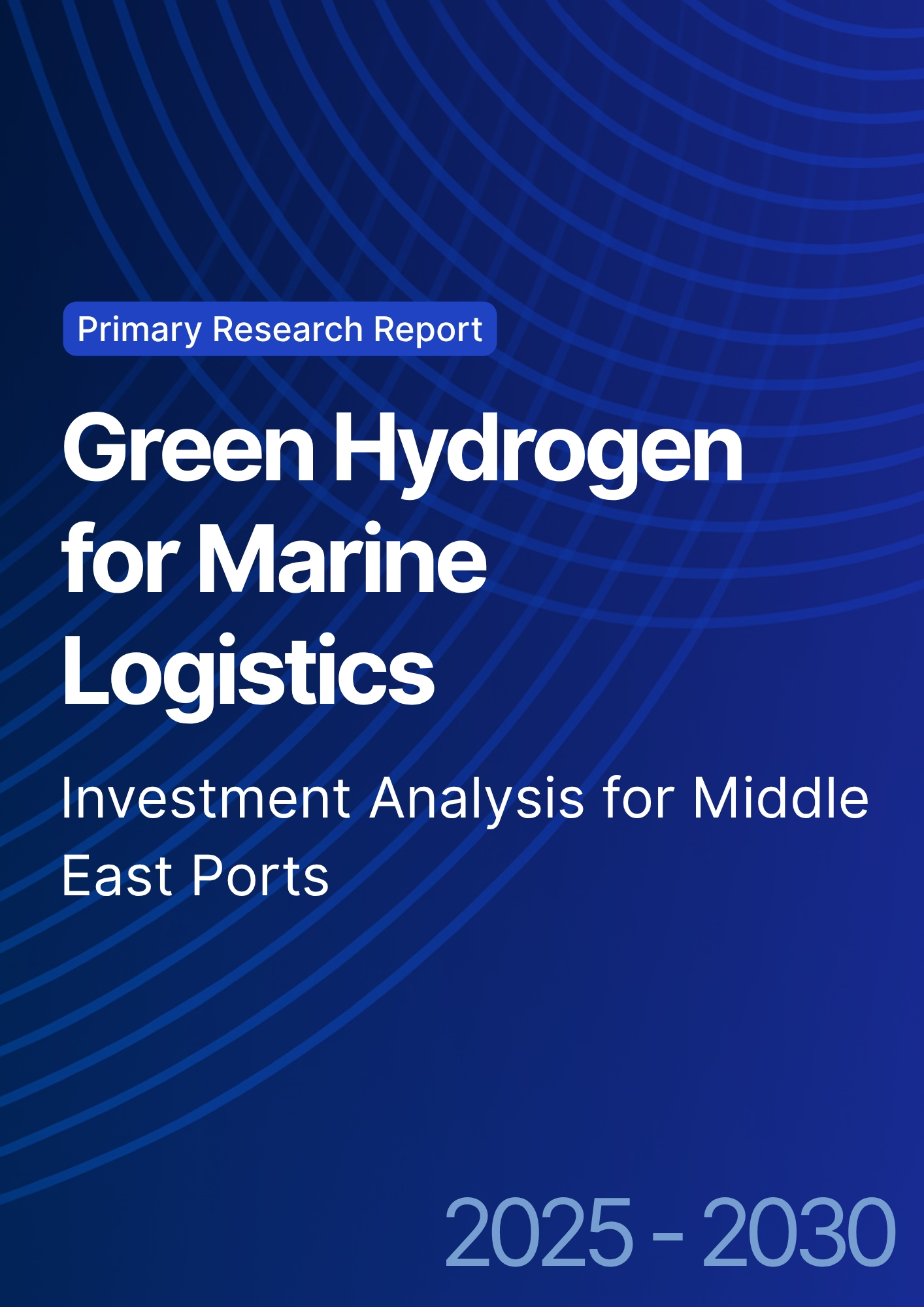

68 Circular Road, #02-01 049422, Singapore
Revenue Tower, Scbd, Jakarta 12190, Indonesia
4th Floor, Pinnacle Business Park, Andheri East, Mumbai, 400093
Cinnabar Hills, Embassy Golf Links Business Park, Bengaluru, Karnataka 560071
Connect With Us
AI-Powered Demand Forecasting: Innovation & R&D for Indian Retail Logistics
This research explores the role of AI-powered demand forecasting in Indian retail logistics from 2025–2030, emphasizing innovations in inventory management, supply chain optimization, and consumer behavior prediction. The study examines how AI and machine learning (ML) can optimize demand planning, reduce stockouts, and improve warehouse operations. Insights into R&D trends, forecasting accuracy, and technology adoption are provided for retailers, logistics providers, and e-commerce platforms in India and the broader Asia Pacific region.

What's Covered?
Report Summary
Key Takeaways
- AI-powered demand forecasting market in Indian retail logistics projected to grow from ₹2,000 crore (2025) to ₹11,500 crore (2030), CAGR 42%.
- Forecasting accuracy expected to improve from 75% (2025) to 95% (2030) using AI and ML models.
- Stockouts in retail are projected to decrease by 30% by 2030 through better demand prediction.
- Warehouse optimization through AI expected to reduce inventory holding costs by 25%.
- Order fulfillment time expected to decrease by 22% by 2030 with AI-driven demand planning.
- Supply chain efficiency improvements due to AI estimated at 40% by 2030.
- E-commerce adoption of AI forecasting in India projected at 60% by 2030.
- Consumer behavior prediction accuracy will rise by 35% through advanced AI models.
- Regulatory compliance for AI-powered logistics forecast models projected at 85% by 2030.
- ROI from AI-based demand forecasting estimated at 18–22% for logistics providers by 2030.
Key Metrics
Market Size & Share
The AI-powered demand forecasting market in Indian retail logistics is set to expand from ₹2,000 crore in 2025 to ₹11,500 crore by 2030, reflecting a CAGR of 42%. This growth is driven by the integration of AI and machine learning (ML) algorithms that enhance demand prediction, reduce stockouts, and improve warehouse operations. Forecasting accuracy is projected to increase from 75% to 95% by 2030, thanks to the ability of AI models to analyze large datasets and detect consumer behavior patterns in real-time. As a result, stockouts will decline 30%, and inventory holding costs will be reduced by 25% through AI-driven inventory management and order fulfillment optimization. Order fulfillment time will shorten by 22% as AI systems predict demand surges and allocate resources accordingly. Supply chain efficiency improvements from AI adoption will reach 40% by 2030, with logistics providers gaining the ability to better allocate resources, streamline transportation, and improve delivery timelines. By 2030, 60% of Indian e-commerce platforms will integrate AI-powered demand forecasting, leading to smarter inventory allocation and faster delivery. The ROI from AI demand forecasting is projected to be between 18–22%, driven by operational efficiencies, better customer satisfaction, and reduced wastage in retail supply chains.
.png)
Market Analysis
The AI-powered demand forecasting market in India and Asia Pacific is set to grow from ₹2,000 crore in 2025 to ₹11,500 crore by 2030, driven by the need for more efficient supply chain logistics in retail and e-commerce. Key trends include the rapid adoption of machine learning algorithms that predict consumer demand with high accuracy. Forecasting accuracy is expected to rise from 75% to 95% by 2030, reducing errors in product allocation and improving inventory management. Stockouts are projected to decrease by 30%, improving sales and customer satisfaction. Order fulfillment time will shorten by 22% due to better demand predictions that optimize warehousing and shipping processes. With AI, inventory holding costs are expected to decline 25%, and supply chain efficiency will increase by 40% as logistics networks become more adaptable and responsive. E-commerce platforms in India will adopt AI-driven forecasting at a rapid pace, with 60% of platforms integrating demand forecasting systems by 2030. The regulatory landscape is expected to be more aligned with AI technologies, with 85% compliance by 2030. ROI for logistics providers implementing AI-powered solutions is projected to be 18–22% by 2030, driven by cost savings, improved speed, and better customer satisfaction.
Trends & Insights
The AI-powered demand forecasting market in India and Asia Pacific is growing rapidly, projected to reach ₹11,500 crore by 2030 at a CAGR of 42%. Emerging trends in AI and machine learning will significantly improve forecasting accuracy, from 75% in 2025 to 95% by 2030. AI platforms will enhance consumer behavior prediction, with accuracy improving 35% by 2030. The focus on inventory optimization and order fulfillment will lead to 25% savings in inventory holding costs, while stockouts will be reduced by 30%. Order fulfillment time will improve by 22%, driven by better demand modeling and faster response times across the logistics network. By 2030, AI adoption in e-commerce will increase to 60%, allowing retailers to better forecast demand and optimize inventory distribution. With AI, supply chain efficiency is expected to improve by 40%, driven by real-time demand prediction and automated adjustments. As AI and data analytics revolutionize the retail logistics landscape, the ROI for implementing these technologies is expected to be 18–22% by 2030. The regulatory environment is expected to become more AI-friendly, with 85% compliance by 2030, ensuring smoother integration into global logistics networks.
.png)
Segment Analysis
The AI-powered demand forecasting market in India and Asia Pacific is segmented by logistics type (retail, e-commerce, wholesale), AI platform integration, and market adoption rates. The retail segment is expected to capture 50% of the market by 2030, followed by e-commerce (30%) and wholesale distribution (20%). By 2030, 60% of Indian e-commerce platforms will have integrated AI-driven demand forecasting tools, which will increase order fulfillment speed by 22% and reduce stockouts by 30%. Forecasting accuracy will rise from 75% to 95% as more retailers adopt machine learning and predictive analytics for inventory and consumer demand forecasting. In terms of AI platform adoption, integrated solutions (combining AI, IoT, and predictive models) will dominate 40% of the market, followed by standalone AI systems for smaller players. Cost per unit of forecasted demand will decrease 15%, driven by more accurate predictions and better resource allocation. Supply chain efficiency will improve 40% as AI allows logistics providers to optimize transportation and warehouse operations. ROI for AI adoption in logistics will range from 18–22% by 2030, based on improved accuracy, reduced operational costs, and faster order fulfillment.
Geography Analysis
The AI-powered demand forecasting market in India and Asia Pacific is projected to reach ₹11,500 crore by 2030, with India leading adoption in the region. Indian retail and e-commerce are expected to account for 60% of the market by 2030, driven by AI-powered logistics platforms that optimize inventory allocation and reduce supply chain inefficiencies. Forecasting accuracy will increase from 75% to 95% by 2030, improving product availability and customer satisfaction. Cross-border supply chain integration will be a key enabler, as AI models increasingly support global demand forecasting for Indian manufacturers. Regulatory alignment will reach 85% compliance by 2030, making AI integration easier across EU–India logistics networks. Cost per patient for forecast-based interventions will decline 15%, and stockout frequency will drop 30%, as predictive modeling becomes more accurate. E-commerce adoption of AI tools is expected to rise to 60% by 2030, improving inventory turnover and reducing reliance on traditional supply chains. Overall, AI-powered forecasting will help India and Asia Pacific leapfrog into more efficient, cost-effective logistics solutions by 2030.
.png)
Competitive Landscape
The AI-powered demand forecasting market in India and Asia Pacific is becoming competitive, with global players such as SAP, IBM, Oracle, and Microsoft entering the retail logistics sector. Local AI vendors like Tata Consultancy Services (TCS) and Wipro are collaborating with Indian retail giants to offer AI-based demand forecasting tools, which enhance inventory management and reduce stockouts by 30%. Emerging companies offering predictive analytics are also gaining traction in small-to-medium enterprises (SMEs). By 2030, e-commerce giants like Flipkart and Amazon India are expected to integrate AI-driven platforms, gaining market share through optimized order fulfillment and inventory turnover. AI-driven solutions will streamline last-mile delivery, and warehousing for Indian logistics providers, improving supply chain efficiency by 40%. ROI for AI-powered demand forecasting solutions is projected at 18–22% by 2030, driven by improved resource allocation, reduced operational costs, and higher customer satisfaction. Firms that successfully combine real-time data from consumers, historical demand, and external factors will lead the competitive landscape, making AI-powered demand forecasting the backbone of India’s retail logistics transformation.
Report Details
Proceed To Buy
Want a More Customized Experience?
- Request a Customized Transcript: Submit your own questions or specify changes. We’ll conduct a new call with the industry expert, covering both the original and your additional questions. You’ll receive an updated report for a small fee over the standard price.
- Request a Direct Call with the Expert: If you prefer a live conversation, we can facilitate a call between you and the expert. After the call, you’ll get the full recording, a verbatim transcript, and continued platform access to query the content and more.


68 Circular Road, #02-01 049422, Singapore
Revenue Tower, Scbd, Jakarta 12190, Indonesia
4th Floor, Pinnacle Business Park, Andheri East, Mumbai, 400093
Cinnabar Hills, Embassy Golf Links Business Park, Bengaluru, Karnataka 560071
Request Custom Transcript
Related Transcripts


68 Circular Road, #02-01 049422, Singapore
Revenue Tower, Scbd, Jakarta 12190, Indonesia
4th Floor, Pinnacle Business Park, Andheri East, Mumbai, 400093
Cinnabar Hills, Embassy Golf Links Business Park, Bengaluru, Karnataka 560071













